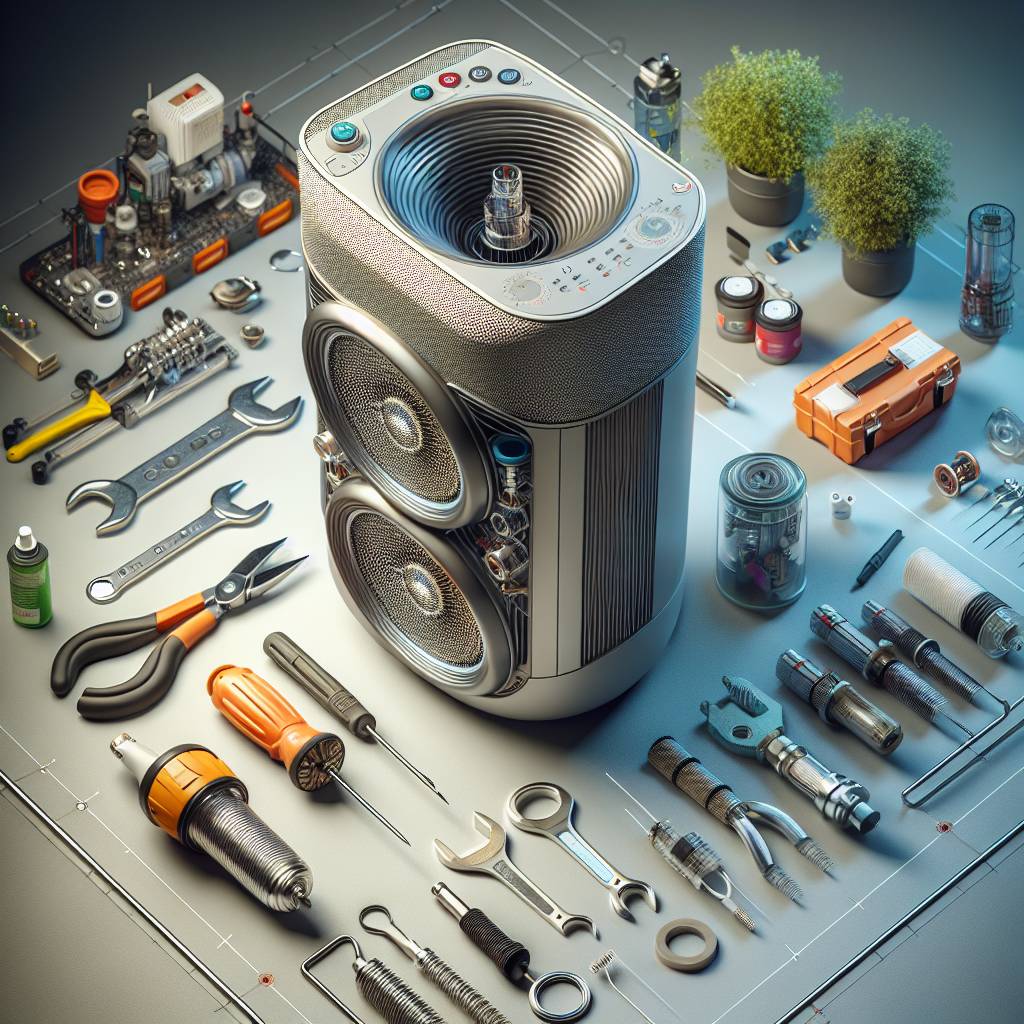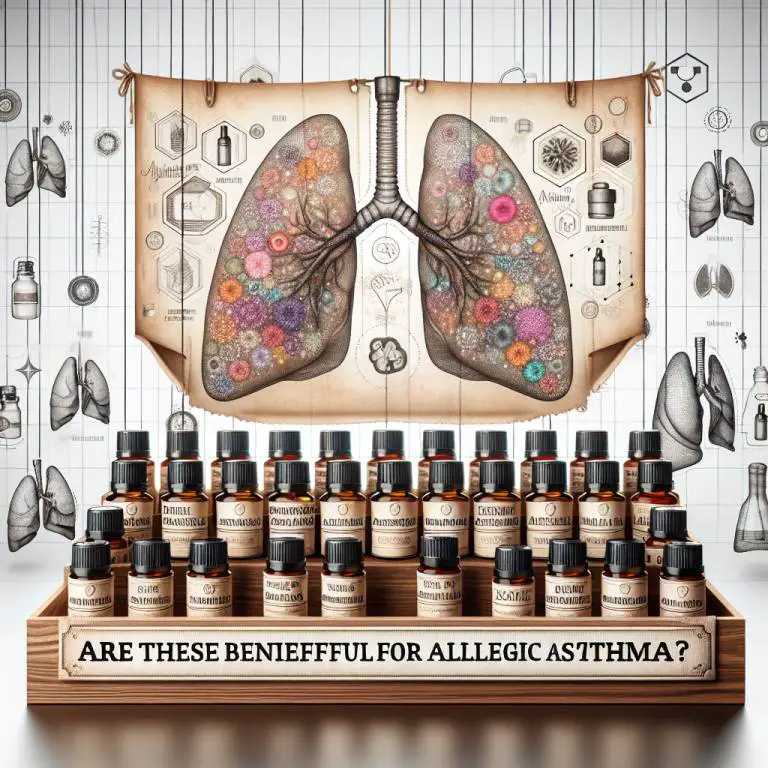Air Purifiers And Asthma: Maintenance Tips
To keep your air purifier working well for asthma, clean or replace the filters regularly, as recommended by the manufacturer. Make sure to place it in a spot where air flows freely around it, avoiding tight corners or close to walls. Also, dust and vacuum your room often to reduce the workload on your purifier. Following these steps will help maintain its efficiency in managing asthma symptoms.

How do air purifiers help manage asthma symptoms?
Air purifiers work by cleaning the air in a room or house, removing pollutants and allergens that can trigger asthma symptoms. They use filters to capture particles like dust, pollen, and pet dander, which are common irritants for people with asthma. This process helps to reduce the likelihood of asthma attacks by maintaining cleaner air.
By removing airborne contaminants, air purifiers also lower the concentration of harmful chemicals and odors that can exacerbate asthma conditions. This is particularly beneficial in urban areas or places where outdoor pollution can seep into homes. Cleaner air means breathing is easier for those with respiratory issues, leading to improved overall health and well-being.
Moreover, using an air purifier can enhance sleep quality for asthma sufferers. Nighttime symptoms are common in people with asthma, and purified air can help reduce these occurrences. This leads to better rest and recovery, which is crucial for managing chronic conditions like asthma effectively.
What are the key maintenance tips for air purifiers used by asthma sufferers?
Maintaining an air purifier is essential to ensure it continues to operate efficiently and effectively remove pollutants from the air. One key tip is to regularly check and clean the pre-filters, which catch larger particles before they reach the main filter. This not only extends the life of the main filter but also ensures optimal purification performance.
Trying to minimize asthma triggers indoors? See why our favorite air purifier for asthma is highly recommended. Delve into its specifications and benefits. Learn more here.
It’s also important to keep the area around the air purifier clear of obstructions. Furniture or other objects blocking the intake or output vents can significantly reduce its effectiveness. Ensuring good airflow allows the purifier to circulate and clean as much air as possible.
Lastly, be mindful of where you place your air purifier. Positioning it too close to walls or in corners might limit its ability to draw in polluted air efficiently. Placing it centrally or on a table can improve its performance and benefit those with asthma by providing cleaner air throughout the room.
How often should air purifier filters be changed to effectively manage asthma?
The frequency at which you should change your air purifier’s filters largely depends on several factors including usage rate and environmental conditions. However, as a general guideline for those managing asthma, it’s recommended to replace HEPA filters every 6-12 months. Pre-filters, which catch larger particles before they reach the HEPA filter, should be cleaned or replaced more frequently—about every 3 months.
If you live in an area with high levels of outdoor pollution or have pets that shed fur and dander, you may need to replace your filters more often than suggested guidelines indicate. Monitoring your symptoms can also guide when a filter change is necessary; if you notice an increase in asthma attacks or reduced effectiveness of your device, it might be time for a new filter.
Adhering to these replacement schedules ensures that your air purifier functions optimally, continuously removing harmful particles from your environment. Regularly changing filters not only helps manage asthma symptoms more effectively but also prolongs the life of your device.
What types of filters are best for asthma sufferers and how do they differ?
The most effective type of filter for individuals with asthma is known as a High-Efficiency Particulate Air (HEPA) filter. HEPA filters are capable of capturing up to 99.97% of airborne particles as small as 0.3 microns in size including dust mites, pollen, mold spores, pet dander, and even some bacteria—all common triggers for asthmatic reactions.
In addition to HEPA filters, activated carbon filters are beneficial for people with asthma because they absorb gases and odors that may irritate sensitive respiratory tracts. These include smoke from cigarettes or cooking fumes that HEPA filters cannot capture alone.
Differentiating between these two types—HEPA focuses on particulates while activated carbon targets chemical pollutants—highlights their complementary roles in creating healthier indoor environments for those suffering from respiratory conditions like asthma. Utilizing an air purifier equipped with both types of filtration offers comprehensive protection against a wide range of airborne irritants.
| Tip | Description |
|---|---|
| Replace Filters Regularly | Follow the manufacturer’s guidelines for filter replacement. HEPA filters, commonly used in air purifiers, typically need replacement every 6-12 months. |
| Clean Pre-Filters | Wash or vacuum reusable pre-filters as recommended by the manufacturer, usually every 2-4 weeks, to maintain efficiency. |
| Check for Indicator Lights | Many air purifiers have filter replacement or cleaning indicator lights. Use these features to maintain optimal performance. |
| Keep Vents Unobstructed | Ensure the air purifier’s intake and outlet vents are not blocked by furniture or other objects to allow free air flow. |
| Regular Dusting | Dust the exterior of the air purifier regularly to prevent dust from entering the system and to maintain air quality. |
| Proper Placement | Place the air purifier in a location where it can effectively circulate air throughout the room, typically away from walls and heavy furniture. |
| Avoid Moist Areas | Keep air purifiers away from bathrooms, kitchens, or other areas with high moisture to prevent mold growth and filter damage. |
| Monitor Air Quality | Consider using an air quality monitor alongside your air purifier to better understand its effectiveness and adjust settings as needed. |
How can you tell when your air purifier needs maintenance or a filter change?
Noticing when your air purifier requires maintenance or a new filter is crucial for its effectiveness. One clear sign is a decrease in air flow or an increase in noise, which suggests the filter might be clogged. Many modern air purifiers also have indicator lights that alert you when it’s time for a change.
Another sign to watch for is an increase in dust around your home or worsening asthma symptoms. This could mean the air purifier isn’t capturing particles as efficiently as before. Keeping track of the time since the last filter change can also help, as most need replacing every 3-6 months depending on usage.
What common mistakes should be avoided in maintaining an air purifier for asthma?
A common mistake is neglecting regular checks and cleanings of the air purifier. This oversight can lead to reduced efficiency and poor indoor air quality. It’s also important not to wait too long to replace the filter, as a clogged filter can harm the unit and fail to remove harmful particles from the air.
Another error is using the wrong type of filter. Not all filters are equal in capturing asthma triggers like pollen, dust mites, and pet dander. Ensuring you use HEPA filters, known for their high efficiency, can significantly impact managing asthma symptoms.
Are there any specific cleaning practices recommended for air purifiers used by people with asthma?
Cleaning practices for air purifiers should focus on preventing any irritants from being released back into the environment. It’s recommended to gently vacuum the exterior vents and wipe down surfaces with a damp cloth regularly. Avoid using harsh chemicals or cleaners that might emit fumes or fragrances.
For those with asthma, it’s also advised to wear a mask while cleaning the unit to avoid inhaling dust or allergens that may have accumulated on it. Checking and cleaning pre-filters monthly can extend the life of more expensive HEPA filters and maintain optimal performance.
Final Thoughts
Maintaining your air purifier properly is key to managing asthma symptoms effectively. By recognizing signs that indicate maintenance is needed, avoiding common mistakes, and following specific cleaning recommendations, individuals with asthma can ensure their device operates efficiently.
Remembering these tips will not only help improve indoor air quality but also contribute to a healthier living environment free from asthma triggers. Regular care and attention allow your air purifier to function at its best, offering peace of mind for those affected by respiratory conditions.






